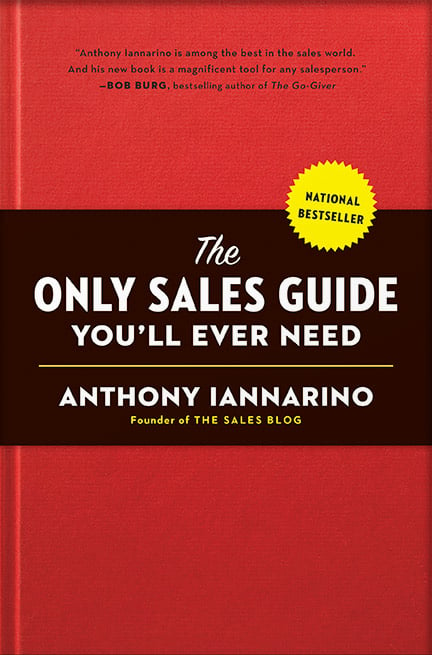Today, October 11, 2019, marks three years since I published my first book, The Only Sales Guide You’ll Ever Need. My primary outcome when writing this book was to ensure that it would stand the test of time (which is why I don’t follow fads like social selling and look instead for trend-lines that provide a sense of direction and suggest an evolutionary change).
I had been writing this blog for five years when a publisher asked me for a book. At the time, I didn’t feel I needed to write a book. I was writing a post every day, and at five hundred words a day, I was already writing the equivalent of three books a year, a book being roughly sixty-thousand words. Because readers kept sending me notes asking me to write a book, I drafted a book with the working title 21 Elements: The Periodic Table of Sales Success. I hired an editor to help me with development and ended up with only seventeen of my original twenty-one elements.
The publisher read the book and hated it. He asked me why I would make the first chapter Self-Discipline, in his words, “when everyone hates self-discipline.” He continued sharing his thoughts, aiming for the third chapter, titled: Caring. Has said, “What does caring have to do with selling?” At this point, I realized the call wasn’t going as well as I hoped it would.
Rather than try to argue about each chapter, I asked him a question, even though I knew the answer. I asked, “Have you ever sold or led a sales force?” He confessed he had not. I followed up by telling him, “I have never published a book, so I will count on you to have a deep understanding of that, and you’ll have to trust that I understand my subject.” He countered by asking me if he could compile several blog posts into a book, and idea that had no interest to me whatsoever.
Going It Alone
At that moment, I decided to publish the book myself. I hired an editor and spent the next six months writing and editing the text. My editor helped me clean up the book, polishing sentences and paragraphs. At one point, he told me to delete chapter seventeen, which he said added nothing. I rewrote it from scratch.
Six weeks from the publication date, I received a direct message on Twitter from an acquisition editor from my publisher asking me why I hadn’t written a book. I DM’d back that I had, and he suggested he couldn’t find it. I told him I was six weeks away from publication. We had a phone call, and he shared with me that he hated my title, and we agreed I would send him the book. A few days later, I signed with my publisher, who immediately recognized the book as a competency model. We published the book, and it became an Amazon.com and the USA Today national bestseller.
Why I Love This Book
I get notes and emails from people who read my books and this blog. The notes about my second book, The Lost Art of Closing, always include something about how much more money the person is making because they learned to control the process and trade value. The emails about book three, Eat Their Lunch, always suggest that the writer is booking more meetings and winning more and bigger deals. But TOSG brings different feedback.
Most of the notes about this book say that not only did it improve their sales, but it also made them a better parent, spouse, and person. The first half of the book is designed to do just that; improve your intangibles, like Self-Discipline, Optimism, Caring, Competitiveness, Resourcefulness, Persistence, Initiative, Communication, and Accountability.
Who you are matters much more than what you do or what you sell. Success in sales is individual, not situational.
There is not a single novel idea in The Was Only Sales Guide. The only novelty in the book is the competency model that I constructed out of character traits and skills that are all well-recognized and documented. Because the ideas are so well documented, I included a reading list at the end of every chapter for people who need to go deeper in any area.Learn Anthony's core strategies & tactics for sales success at any level with The Only Sales Guide You'll Ever Need
TOSG is a sales book. So all the Mindset chapters in the first half of the book are all written for a salesperson. The second half of the book is made up of the skills necessary to succeed in sales, and I added a few that have merged as being critical to success, even though they are not widely taught or trained. In that half, you find Closing, Prospecting, Storytelling, Diagnosing, Negotiating, Business Acumen, Change Management, and Leadership. The last three of these skills are differentiators for a salesperson—especially when coupled with the Mindset chapters.
On my first book’s third birthday, I can’t imagine writing about anything else. When you pick it up, email me at Anthony iannarino.com so that I can send you the workbook.











